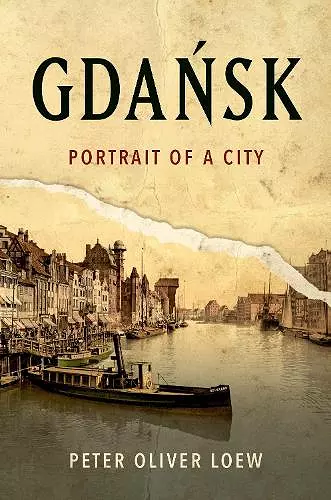Gdańsk
Portrait of a City
Format:Hardback
Publisher:Oxford University Press Inc
Published:15th Sep '24
Should be back in stock very soon

It was where World War II began on September 1, 1939. Its wartime experience was immortalized in Günter Grass`s The Tin Drum. Later it attracted worldwide attention as the site where workers` strikes led by Lech Walesa and the ensuing Solidarity movement led to the fall of Communism in Eastern Europe. Proud Hanseatic port, heart of the Baltic Sea trade, twice a "Free City," present-day liberal, cosmopolitan center: Gdańsk's story between Germany and Poland is rich and fascinating. As Peter Oliver Loew colorfully shows, Gdańsk, also known as Danzig, is incomparable not only because of its recent past but also in how it has so uniquely embodied the tensions of the European continent over the last millennium. Situated geographically and culturally within these tensions, the city has developed a fascinating identity amid frequent conflict and shifting national affiliations. From prehistoric amber workers to early Slavic dukes, the conquest of the Teutonic Order, and submission to the Polish crown, Gdańsk's development led to a remarkable flowering. Around 1650, no city between Moscow and Amsterdam was bigger or wealthier. As Poland's decline culminated with the Partitions of Poland, the city ultimately found itself annexed into Prussia. The destruction of 1945 brought an almost entirely new Polish population, who rebuilt the historic center, now part of the reconstituted Polish state. Through each historical rupture, and despite the efforts of distant courts and capitals to rewrite its history, Gdańsk has maintained--or sometimes rediscovered--a connection to its own past. Today the port city on the Vistula once again thrives, drawing strength from its diversity and history. Drawing on the latest research of German and Polish historians, Peter Oliver Loew vividly portrays the politics, economy, society, culture, and everyday life of a European city par excellence.
This is the best portrait of Gdańsk ever written. Peter Oliver Loew vividly recounts the fascinating history of this Baltic town up to the present day. The reader gets a taste of what it meant to live there throughout centuries and can understand the unique position of the city located between Poland and Germany and claimed by both sides. * Paweł Machcewicz, Polish Academy of Sciences and founding director of the Museum of the Second World War in Gdańsk *
Comprehensive, balanced, accessible, this is a much-needed account of Gdańsk's fascinating, over-thousand-year past. Peter Oliver Loew evocatively chronicles Germanic and Slavic influences, changing urban and maritime features, and the sometimes central role this city on the periphery has played in European and world history. * Patrice M. Dabrowski, author of Poland: The First Thousand Years *
This is a long-overdue history of Gdańsk, a mid-sized, relatively provincial city that for decades became a symbol of some of the most important events in twentieth-century European history. Loew beautifully weaves multiple chapters of the city's history into a powerful narrative of its uniqueness and ordinariness. This rich work should become a must-read for anyone interested in exploring Polish and European history and all its complexity not from the center but rather from its margins. * Anna Müller, author of If the Walls Could Speak: Inside a Women's Prison in Communist Poland *
ISBN: 9780197603864
Dimensions: 244mm x 165mm x 31mm
Weight: 590g
296 pages